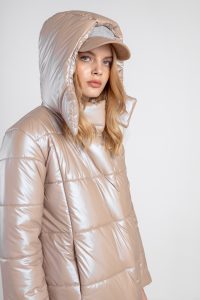 How to choose and buy a down jacket or jacket for the Winter?
How to choose and buy a down jacket or jacket for the Winter?
When we are faced with a choice of what to buy among the many down jackets and jackets, we often cannot understand what to choose, what we will wear warm, comfortable and safe. Therefore, the choice of buying a down jacket or jacket should be considered carefully, paying attention to all its components.
Down jacket (hammer) filler, its types and properties.
Of course, this is the main thing that you should pay attention to in the first place, based on the practicality of the purchased product. A down jacket is considered to be a jacket filled with insulation, the material for which is usually down (synthetic down), although there are also synthetic fillers. It depends on the filler how warm the down jacket will be. Consider the following fillers existing on the modern market:
1. Down of waterfowl, possessing not only thermal insulation, but also water-repellent properties. On the label of a product with such a filler, there will be the designation “down”, unfortunately, this filler is rarely found in its pure form due to its high cost. Usually a cut bird’s feather is added to it, and the label will already have the inscription “feather”. The ratio of down to feather will be indicated as a percentage – 80/20, 70/30, while the warmest down jacket will be the one in which the ratio of down to feather is 75/25.
2. The inscriptions “cotton” or “wool” on the tag will mean cotton wool or wool batting, which are also warm fillers, but of a lower quality than down and after several washings the product may lose its original appearance and heat-insulating properties, therefore such down jackets are among the cheapest on the market.
3. “Polyester” on the tag will mean that the product is filled with padding polyester. Such a product looks worse and does not warm well after the first wash.
4. Hallfiber (synthetic fluff). This material has incorporated the best properties of down and padding polyester – it is a hypoallergenic and environmentally friendly filler, keeps heat well, has high moisture resistance, is good for air permeability and quickly restores its shape after deformation.
5. Isosoft is a modern and popular material among heaters. It consists of small cells, thanks to which heat is retained. After shrinking and frequent washing, it quickly recovers and has hypoallergenic properties.
Another important indicator of the quality of the filler is its elasticity and is indicated on the label as “FillDown”. For winter down jackets, 550-800 units will be an acceptable indicator. To determine if your down jacket is firm enough, you need to roll it into a thin roll, then unfold and shake it, after which it should return to its original shape within 20 minutes.
Uniform distribution of the filler.
A warmer winter down jacket is considered to be one with 500-600 grams of down. In order for the down jacket to be more evenly filled with filler, so that it does not deform during the operation of the product, the down must be in special bags that are sewn inside the jacket, moving freely and without piercing them.
In natural types of fillers, the processing number of the fluff is indicated in DIN EN 12934, which means that the filler has been subjected to soaking, washing, drying, filtering and sterilization. An unpleasant specific smell indicates improper processing of the filler.
To increase the strength, the down jacket is stitched horizontally or vertically, the seams must also be neatly stitched, without hanging threads.
Down jacket material.
The upper part of the down jacket is made up of natural and synthetic membrane fabrics, which are breathable and hygroscopic; in addition, the top layer is additionally coated with a special water-repellent agent that enhances this property. In the role of a lining, materials can be used that additionally protect the product from cold and filler loss.
